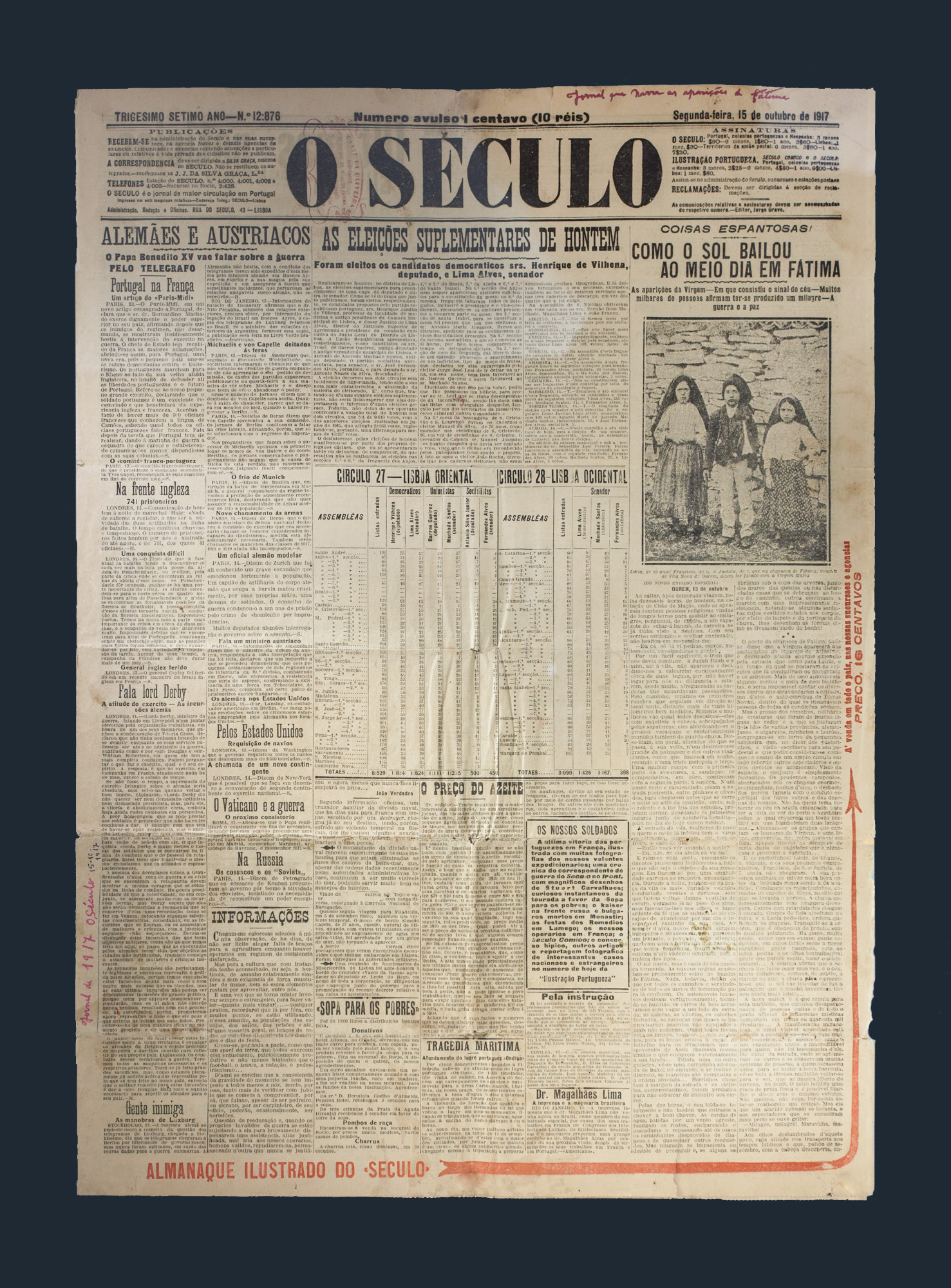The Exhibition
The colors of the Sun: the light of Fatima in the contemporary world
Evocative temporary exhibition of the Apparition of October 1917
On the year of the Centennial of the Apparitions of Fatima
Having as historical material the 13 of October, 1917, and the direct and indirect narrations of the Miracle of the Sun, which 70000 persons claim to have witnessed, the exhibition intends to recreate sceneries related to the landscape of the day of the last apparition of the Virgin Mary, in Fatima, by means of several sensory mechanisms normally linked to antique and contemporary artistic works. From this memory, the visitor will realize that the Miracle of the Sun was not the final moment of the story of the apparitions, but was instead the initial day of a story in which the pilgrim becomes a real character.
Starting from the metaphor of the Miracle of the Sun, the exhibition begins with some works related to the philosophic landscape that, in the contemporary world, advocates the thesis that “God lies apart from humanity” (part I: “The eclipse of the Sun”) and in the second, third and fourth parts, the exhibition develops from the reflection, underlined by the Catholicism, of the role of the character of the Mother of God as an woman especially attentive to the events of human history: thus, the antique works that depict the images’ path of the apparition of October are presented under the title “The Moon presides at the night: the speeches and the images of the skies of Fatima”; thus, the artistic objects linked to the narration of the message of Fatima are exposed with the formulation “The brightness of the Moon shows the light of the Sun: in Fatima, Mary presents Christ”; thus, the cordial symbolic synthesis is exposed from “The shape of the Moon: the synthetic language of the heart”
A considerable part of the area of the exhibition is dedicated to the memory of the place that, from 1917, emerges in Cova da Iria, a place marked with architectonic constructions which, along 100 years, model the landscape-scenery of the experience of faith (part V and VI: “The light configures the place: The Shrine as perimeter for all peripheries”; “A constellation of lights: the experience of Fatima as a burning clearing”).
After the contemplation of the objects that compose the artistic treasures of the Shrine of Fatima, the visitor is led to a self-confrontation, from the conscience that the home of God in human history depends on the intimate place (= tabernacle) that each individual has for God. The great historical tabernacle ending the exhibition – part VII: “The star with no west: the human being, intimate place (= tabernacle) of God” -, where the Risen Christ is presented, is only a symbol of each human tabernacle where God can potentially live.
Inaugurated in the jubilee year of the Centennial of the Apparitions, the exhibition “The colors of the Sun” is the most ambitious exhibition the Shrine of Fatima has ever promoted; the exhibition displays artworks on a loan basis from private collectors and ecclesial institutions (parishes, diocesan museums, seminaries, and other religious communities) as well as civil institutions such as the Museum of the Foundation Calouste Gulbenkian and the Archive and Documentation Centre of the Office of Documentation services, Communication and Public Relations of the Ministry of Economy. Through the museology language, artworks and other material testimonies from different historical periods communicate in order to create a speech that would lead us to interpret the role of Fatima in the contemporary world.
Marco Daniel Duarte
Commissaire de l’Exposition



